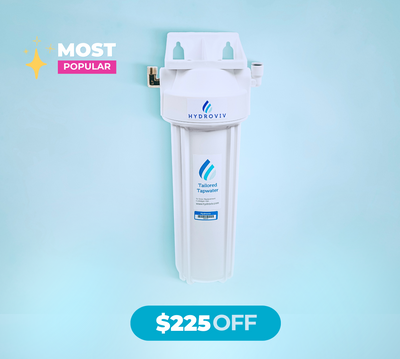Problems We Found In Boston's Drinking Water
RSS
Analies Dyjak, M.A. | Water Nerd
**Updated July 17, 2019 to include current data
For our 2018 Boston water quality issues report, we collected water quality test data from from the Massachusetts Water Resources Authority (MWRA) and the Environmental Protection Agency. We cross referenced these data with toxicity studies, scientific reports, and medical literature to determine information that we believe the public should be made aware of. The water filters that we offer in Boston and are optimized with this research in mind.
Where Does Boston Source Its Drinking Water?
Boston sources its tap and drinking water from the Quabbin and Wachusett Reservoirs, both of which are over 35 miles west of the city. These two reservoirs combined supply 200 million gallons of water on a daily basis. Water from the Ware River can also be added to the drinking water supply if needed.
Lead in Boston’s Drinking Water
Lead enters Boston's drinking and tap water through older lead service pipes and lead-containing plumbing. When corrosion control measures put in place by the municipality fail (like what recently happened in Flint, Michigan), lead leaches into the drinking water, and can reach dangerous levels. Currently, 10% of samples analyzed for lead in Boston's drinking and tap water are over 9.7 parts per billion. Though Boston's water quality is currently in compliance with federal regulations, EPA, CDC, and The American Academy of Pediatrics all acknowledge that there is no safe level of lead, and federal regulations do not take into account levels measured at an individual tap.
Disinfection Byproducts (DBPs) In Boston’s Drinking Water
Disinfection Byproducts are a category of emerging contaminants which means they have been detected in drinking water but the risk to human health is unknown. DBPs are formed when chlorine-based disinfectants are routinely added to the water supply to kill bacteria. EPA regulates two categories of DBPs: Total Trihalomethanes (TTHMs) and Haloacetic Acids-5 (HAA5). Regulatory agencies have very little knowledge about the adverse health effects of DBPs, and their toxicity. EPA has stated that they have been linked to increased risk of bladder cancer, as well as kidney, liver, and central nervous system problems. Boston had relatively low levels of both TTHMs and HAA5.
It’s important to note that only a handful of contaminants are required to be included in annual Consumer Confidence Reports, and that there are hundreds of potentially harmful unregulated contaminants that aren’t accounted for. If you’re interested in learning more about water filters that have been optimized for Boston's tap water quality issues, feel free to visit www.hydroviv.com to talk to a Water Nerd on our live chat feature or send us an email at hello@hydroviv.com.
Other Articles We Think You Might Enjoy:
What is Chomium-6?
Lead In Drinking Water
Chloramine In Drinking Water


